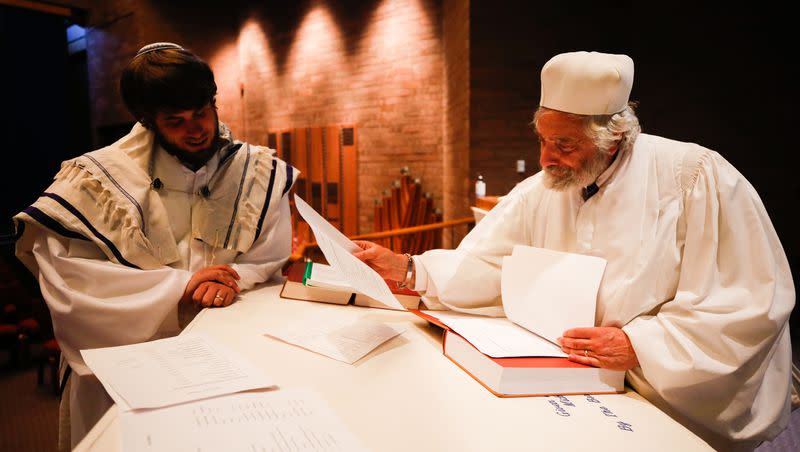Opinion: Utah is one of the safest states for Jews as hate crimes rise

- Oops!Something went wrong.Please try again later.
Earlier this year, the Anti-Defamation League issued a startling report that showed the number of antisemitic incidents in the United States — assaults, vandalism and harassment — was higher in 2022 than in any year since the league began keeping records in 1979.
Those who think hate crimes against Jews are a thing of the past — something belonging to black-and-white films from Nazi Germany — are sadly mistaken. They exist and are on the rise.
The report identified Utah as one of the safest states from such crimes, with six reported incidents in 2022. But that doesn’t give a clear picture of what congregations face each week, requiring security to be present during services and constant training in response to aggression and violence. That’s happening everywhere.
In 2021, someone etched a swastika on the window of a Jewish synagogue in Salt Lake City. As Utah Rabbi Avremi Zippel told reporters at the time, “A swastika is not a political statement. A swastika is an image of hate. A swastika represents one thing and one thing only and that is death to the Jews.” And this, the Deseret News reported him saying, is becoming unfortunately more commonplace.
Rosh Hashanah, the celebration of the Jewish new year, begins Friday evening and ends at sundown Sunday. Yom Kippur, the holiest day in Judaism and Samaritanism, will be observed Sept. 24-25 this year. It is the day of atonement, traditionally including 25 hours of fasting and earnest prayer. Many observant Jews spend most of the day in a synagogue.
These sacred days of observance would be a good time for the rest of the community to pledge to confront and resist hatred of any form directed toward Jews. Locally, it should be a time to renew the long-standing and historic bond between Judaism and the greater Utah community at-large.
That renewal includes remembering history. Jewish settlers came to Utah, or the territory of Deseret, as it was known then, not long after the first pioneers. They came because word had spread as to how friendly pioneer settlers were toward them.
A history published on mormonsandjews.org notes some of these new settlers established profitable businesses. In 1865, Brigham Young “offered a hall gratis for religious services. On the High Holy Days that year, 50 Jews attended services, including some from Bozeman, in Montana Territory.”
Related
Among those early business leaders were the Auerbach brothers, Frederick, Samuel and Theodore. President Young helped them start a department store in Salt Lake City that remained a downtown fixture until 1977.
It includes remembering history, such as the election of Simon Bamberger as Utah’s first Jewish governor in 1916, an election the state’s website said came with the support of prominent members of The Church of Jesus Christ of Latter-day Saints.
Bamberger took office at a time when the state had a budget deficit, which disappeared under his administration. He chose not to run for a second term.
Surely, the history of Utah provides neither precedent nor cover for those who would commit crimes of hatred against any religious adherents, let alone members of the Jewish community.
Nationally, the rise in antisemitic behavior ought to kindle revulsion in every patriotic soul. These crimes affect not only Jews, but also people wrongly believed to be Jewish, such as a University of Arizona professor who was shot to death last year by a student who mistook him for a Jew.
The Anti-Defamation League report cataloged 2,298 incidents of harassment nationwide in 2022, either verbal or in writing, containing either “slurs, stereotypes or conspiracy theories.” This was a 29% increase over 2021.
Antisemitic vandalism rose by 53%, and assaults were up by 26%. The United States is but one part of a global increase in antisemitic harassment and crimes.
After the University of Arizona professor, Thomas Meixner, was killed, the Arizona Republic published an opinion piece by Michael Masters, head of a national security organization for the Jewish community. He argued that the crime happened because no one took seriously the visible threats the assailant had made. He had sent threats via texts. The school had expelled the assailant but took no further steps to prosecute him or bar him from campus.
The lesson there is for no one to remain silent or passive in the face of hate-based threats. History is too replete with lessons about the outcome of such neglect.
Instead, the community should use the upcoming holy days to pledge intolerance toward antisemitic behavior of all kinds, wherever it is found.

